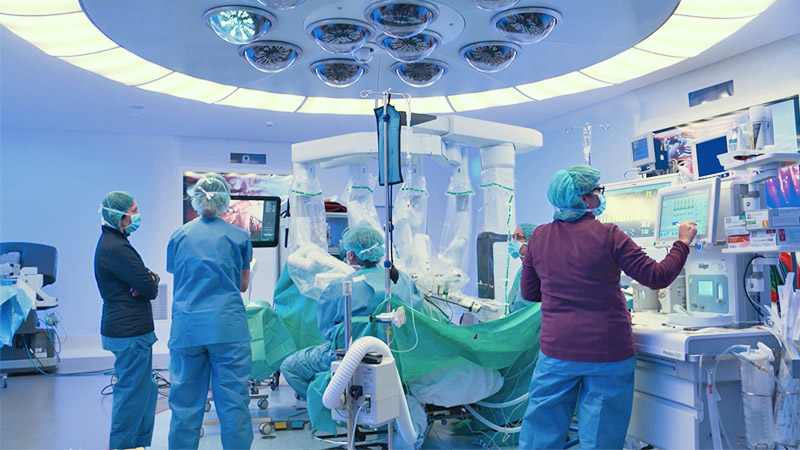In recent years, minimally invasive surgery has found its way into many operating rooms, and gynaecologic cancer surgery is no exception. With robotic surgery, surgical complications are reduced and a better recovery of the patient is achieved. However, there are different possible approaches to perform these interventions. Now, for the first time, a study explores the differences between all of them in performing para-aortic lymph node dissection. This is a common procedure for gynaecological cancers to see if the cancer cells have spread.
A REVIEW OF THE STELLA-2 TRIAL OF EVALUATION OF THE EXTRAPERITONEAL APPROACH
This study consisted of a retrospective review of the STELLA-2 trial, which sought to assess whether an extraperitoneal approach or without violating the peritoneal cavity would be safer for patients undergoing staging procedures in ovarian and endometrial cancers in early stage. The results of this review have served to conclude that the extraperioteneal robot-assisted approach for lymphadenectomy or dissection of the lymph nodes arranged around the abdominal aorta, also known by its acronym PALND, was associated with fewer surgical complications. The results of this study have been published in The Journal of Minimally Invasive Gynecology.
The results of this recent study have served to conclude that the extraperioteneal robot-assisted approach to lymphadenectomy is associated with fewer surgical complications
A COMPARISON OF FOUR DIFFERENT SURGICAL APPROACHES
Data from 203 patients from the STELLA-2 trial were included in this outcome review and served to compare four different approaches. Thus, the results of two laparoscopic approaches were evaluated, one transperitoneal and the other extraperitoneal with another two robot-assisted, also transperitoneal and extraperitoneal. “In all cases it was observed that variables such as age, body mass index and waist-hip ratio independently increased the risk of complications in PALND, while the extraperitoneal robotic approach was an independent protective factor for the appearance of these complications”, explains Dr. Berta Díaz-Feijoo, gynecologist oncologist at the Instituto Clínic de Ginecología, Obstetricia y Neonatología (ICGON) of the Hospital Clínic de Barcelona and gynecologist oncologist of barnaclínic+.
Dra. Berta Diaz-Feijoo
“In all cases it was observed that variables such as age, body mass index and waist-hip ratio independently increased the risk of complications in PALND, while the extraperitoneal robotic approach was an independent protective factor for the appearance of these complications”
ADVANTAGES OF THE EXTRAPERITONEAL ROBOTIC APPROACH
The results of the published review also demonstrates that this extraperitoneal robotic approach does not compromise lymph node recovery or increase operative time or hospital stay. “Improved 3D robotic visualization, surgeon ergonomics, or hemostatic precision could explain these results”, adds Dr. Berta Díaz-Feijoo. In addition, it highlights how little data is available so far on the benefit of robot-assisted surgery in reducing intraoperative and postoperative complications and that, thanks to this publication, it has been possible to advance in defining a better approach to the many options that now exist.
Dra. Berta Diaz-Feijoo
“The improved robotic 3D visualization, the ergonomics of the surgeon or the hemostatic precision could explain these results”
Dr. Berta Díaz-Feijoo, gynecologic oncologist of the Hospital Clínic de Barcelona and barnaclínic+
Thus, and according to the data obtained, whenever lymphadenectomy is necessary for the surgical staging of high-risk ovarian or endometrial carcinoma, the extraperitoneal robotic approach could lead to better patient management, regardless of their baseline characteristics (that is, previous surgeries, age or obesity).



